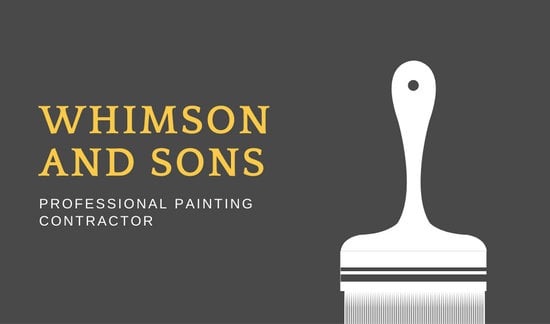Seasonal Consider Business Outside Painting: Key Insights You Must Recognize
Seasonal Consider Business Outside Painting: Key Insights You Must Recognize
Blog Article
Content Produce By-Fox Urquhart
When you're intending a commercial outside painting project, seasonal variables can make or damage your results. You'll wish to think about how temperature and moisture effect paint application and drying times. Choosing the right period can ensure your paint sticks properly and lasts longer. But which seasons are really the best for this type of work? Let's explore exterior painter minneapolis that can influence your job's success.
The Impact of Temperature on Paint Application
When you're planning an industrial outside painting project, the temperature can substantially affect how well the paint adheres and dries.
Preferably, you intend to paint when temperature levels vary between 50 ° F and 85 ° F. If it's as well cold, the paint may not treat properly, bring about issues like peeling or cracking.
On the flip side, if it's as well hot, the paint can dry out too quickly, protecting against correct bond and resulting in an uneven surface.
You need to also consider the time of day; early morning or late afternoon supplies cooler temperature levels, which can be more positive.
Constantly inspect the manufacturer's referrals for the particular paint you're utilizing, as they often supply support on the excellent temperature level variety for optimal results.
Moisture and Its Effect on Drying Times
Temperature isn't the only ecological variable that affects your business outside painting task; humidity plays a significant role as well. High moisture levels can decrease drying out times dramatically, affecting the general top quality of your paint work.
When the air is filled with dampness, the paint takes longer to heal, which can cause problems like bad adhesion and a higher threat of mildew growth. If you're repainting on a particularly damp day, be prepared for prolonged wait times between layers.
It's critical to keep track of local climate condition and strategy as necessary. Preferably, aim for humidity levels in between 40% and 70% for ideal drying out.
Maintaining you can try this out in mind guarantees your task remains on track and supplies a lasting coating.
Best Seasons for Commercial Exterior Paint Projects
What's the best season for your commercial external paint jobs?
Springtime and early fall are generally your best bets. During these periods, temperatures are light, and moisture degrees are commonly lower, producing perfect conditions for paint application and drying out.
Avoid summer season's intense heat, which can cause paint to completely dry also rapidly, resulting in inadequate bond and finish. In a similar way, winter months's chilly temperatures can hinder proper drying and healing, risking the longevity of your paint work.
Go for days with temperatures in between 50 ° F and 85 ° F for optimum outcomes. Keep in mind to examine the local weather prediction for rainfall, as wet problems can spoil your job.
Planning around these factors guarantees your paint project runs efficiently and lasts longer.
Conclusion
Finally, planning your commercial exterior painting projects around seasonal factors to consider can make a significant difference in the outcome. By scheduling job during the optimal temperature levels and moisture levels, you'll guarantee better adhesion and drying out times. Remember to watch on local weather forecasts and choose the right time of year-- spring and early loss are your best bets. Taking these actions will assist you accomplish a resilient and professional coating that lasts.
